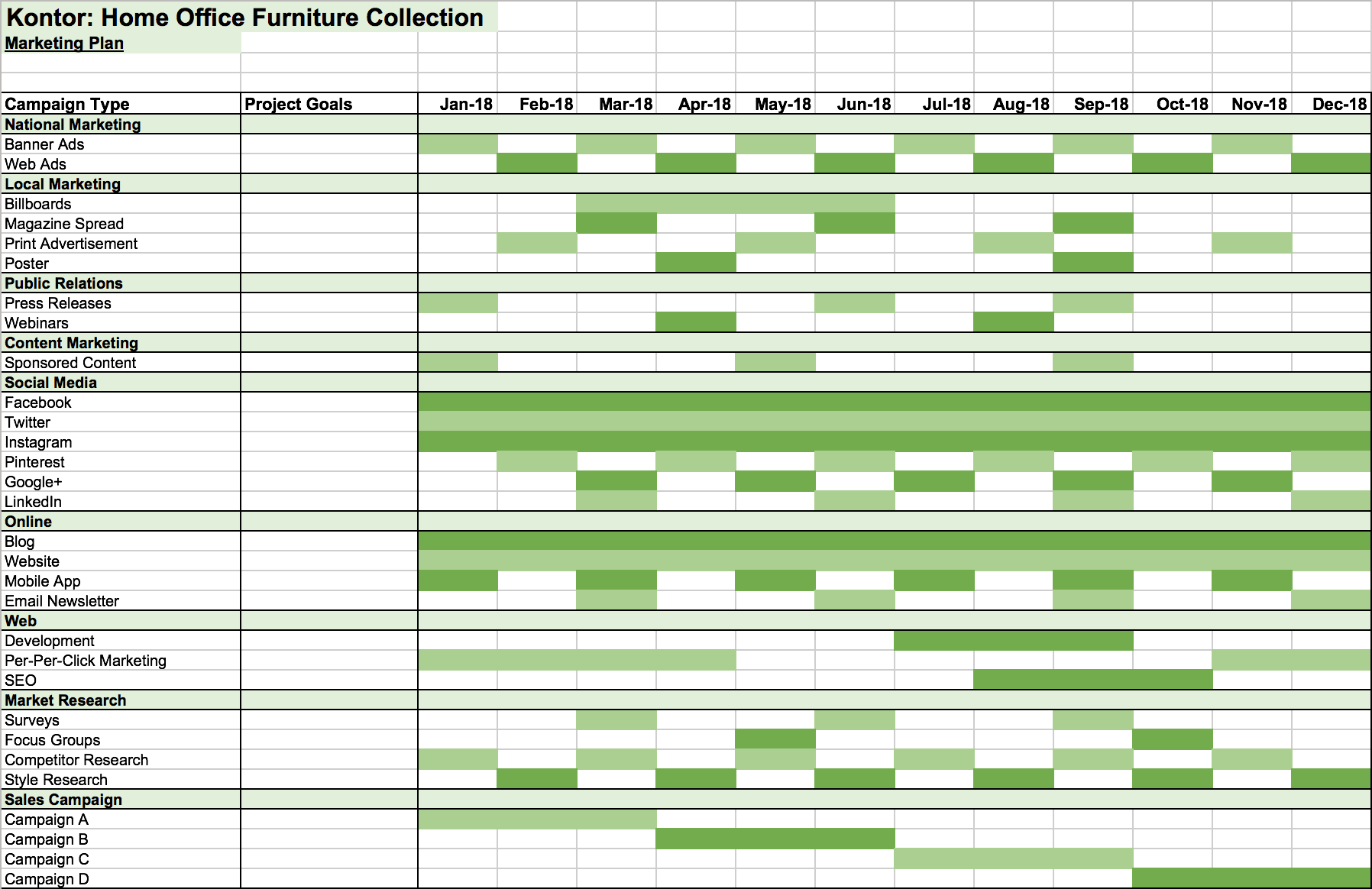A marketing plan is a comprehensive document or blueprint that outlines a business advertising and marketing efforts for the coming year. It describes business activities involved in accomplishing specific marketing objectives within a set time frame.
Below, I have created a marking plan which discusses what Kontor will do in one year (2018) to raise awareness of the brand, to generate sales and to increase the brand’s overall professionalism to gain market share.
Advertisement is vital in todays society. The United Kingdom ranks fourth among the world’s largest advertising markets (Statista, 2017) giving Kontor a successful and vast opportunity to reach its target audience. On average, UK adults use their phones 264 times a day (CIC, 2017) therefore, having web, online and social media marketing plays a vital role with communicating to potential consumers.
In the marketing plan, I have granted 3 months out of the year to focus on SEO marketing. SEO marketing (search engine optimisation) uses strategies, techniques and tactics to increase the amount of visitors to a website through a search engine. One fragment of this type of marketing is local SEO; 30% of searches are related to location (Google, 2016) and 72% of consumers who did a local search visited a store within five miles (WordStream, 2016). This illustrated how important local searches are, as they can direct local consumers to the Kontor website. 61% of marketers say improving SEO and growing their organic presence is their top inbound marketing priority (HubSpot, 2017), therefore, SEO marketing has a a presence during a quarter of the year in order to increase business growth and get the Kontor brand and collection out for consumers to see.
Another effective tool to market a product is by blogging. 53% of marketers say blog content creation is their top inbound marketing priority, and if Kontor posts 16+ blog posts per month, we will get 3.5 times more traffic the companies that publish 0-4 monthly posts (HubSpot, 2016). This therefore is vastly effective and is why every month is accounted for on our marketing plan to ensure content is being created on blogs to boost the Kontor brand, and enable consumers to interactive with the business, thus boosting awareness and leading to sales.
Another vital part of marketing is social media, to which every month of the year will have content across all of the various networks. Facebook continues to have the most engaged users with 70% of people logging on daily, and a further 43% who do so several times a day (Pew Research Center, 2015). This is why I have stated that marketing the Kontor collection over Facebook will happen every month, and more specifically, several times a month. Facebook is an engaged platform reaching a vast amount of adults which fit our target audience, therefore increasing view ability and leading to consumer purchasing. Instagram is a social media network which will be worked on every month. Instagram as 500 million monthly active users with over 95 million photos and videos shared every day (HubSpot, 2017), therefore, the amount of potential consumers reached is vast. Instagram is a photo and video sharing platform, therefore Kontor will be able to carry out free advertising and marketing of the collection and the brand.
In a 2017 e-strategy trends report, it is stated that 15% of consumers respond to banner ads and 7% of consumers respond to billboards from small businesses. This is reflected in the amount of months in the year that will look into these marketing services. They still play a vital part of a businesses marketing strategy, however, don’t reach as many consumers as say social media would.
To conclude, a marketing plan is a hugely effective way to increase brand identity and to raise awareness of the Kontor home office collection. There are several aspects to a marketing plan such as content marketing, web, online, national marketing and even campaigns. Therefore, keeping organised and planning ahead will allow more ease to the business when launching and developing the Kontor brand and collection.
Bibliography:
E-Strategy Trends (2017) Top Small Business Marketing Channels. David Erickson. Available from http://trends.e-strategyblog.com/2017/11/06/small-business-marketing-channels/28811 [accessed 15 November 2017].
CIC (2017) Digital is Transforming UK Media. The Creative Industries. Available from http://www.thecreativeindustries.co.uk/industries/advertising/advertising-facts-and-figures/digital-advertising [accessed 15 November 2017].
Google (2016) Google Trends. Google. Available from https://trends.google.com/trends/. [accessed 15 November 2017].
HubSpot (2016) Content Marketing Statistics. HubSpot. Available from https://www.hubspot.com/marketing-statistics [accessed 15 November 2017].
HubSpot (2017) Search Engine Optimization Statistics. HubSpot. Available from https://www.hubspot.com/marketing-statistics [accessed 15 November 2017].
HubSpot (2017) Social Media Statistics. HubSpot. Available from https://www.hubspot.com/marketing-statistics [accessed 15 November 2017].
Pew Research Center (2015) Social Media. Pew Research Center. Available from http://www.pewresearch.org/topics/social-media/2015/ [accessed 15 November 2017].
Statista (2017) UK: Advertising Industry – Statistics & Facts. Statista. Available from https://www.statista.com/topics/1747/advertising-in-the-united-kingdom/ [accessed 15 November 2017].
WordStream (2016) 8 Super-Fascinating Digital Marketing Stats Revealed at SMX East. WordStream. Available from http://www.wordstream.com/blog/ws/2015/10/06/smx-east [accessed 15 November 2017].

